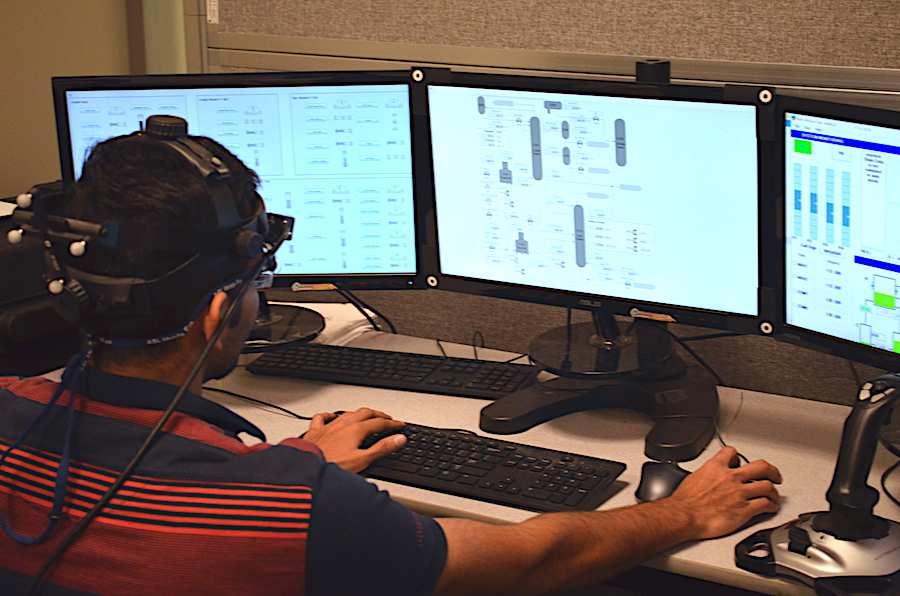August 13, 2019

Participants were required to complete process monitoring and Multi-Attribute Task Battery tasks together. Essentially, they worked as control room operators in an oil and gas refinery plant, monitoring gauges, responding to alerts, tracking information on computer screens and more. Photo by Ryan Owens.
Oil refinery safety technicians, air traffic controllers, security guards, TSA agents, nuclear power plant safety techs — these jobs and more are key to our safety. And all require the ability to monitor loads of information and adjust to any abnormal signals, which makes understanding their awareness and effectiveness in real time critical to public safety.
Mizzou Engineering’s Jung Hyup Kim just discovered a way to do just that.
Kim, an assistant professor of Industrial Manufacturing and Systems Engineering, and graduate student Xiaonan Yang recently published “Assessing situation awareness in multitasking supervisory control using success rate of self-terminating search” in the International Journal of Industrial Ergonomics.
The main discovery was the relationship between self-terminating visual search (STVS) and situational awareness level. STVS is a person’s ability to register an alert and know exactly where to look rather than scanning their entire field of vision for the cause of the alert.
By using eye-tracking devices and software, Kim was able to determine how quickly test subjects were able to location of an alert in a multitasking environment. His team paired those results with industry-standard situational awareness assessments and found that those who were able to more quickly locate the area of an alert had a better understanding of what happened during the experiment than those who took more time to search.
“When operators are looking for an abnormal cue in a multi-monitoring environment, they can directly find the cause of the signal if they have better situational awareness,” Kim explained. “If they have poor situational awareness, they will just look around and take a longer time to find it.”
What it all boils down to is this: The greater the understanding of the system and the situation, the better a person can respond to alerts indicating an abnormality. Those who know the system better can solve problems more quickly.
The goal is to take this research and develop it into a method through which supervisors can monitor situational awareness in real time in the hopes of limiting potentially catastrophic mistakes. Stress levels, tiredness, unfamiliar situations and more can all change one’s awareness over time, and catching those issues before they cause even bigger problems is critical.
“If you work at a job for a long time, you probably understand what you need to do,” Kim said. “But how well do you understand the status and dynamics of the current situation, right now? You will be able to assess the operator’s situational awareness in real time.”